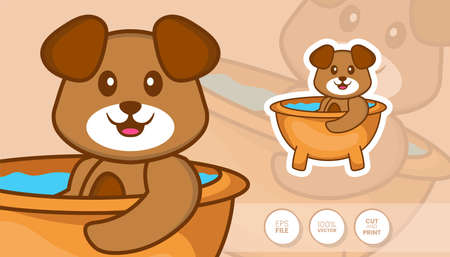Understanding Your Cat’s Play Instincts
If you’ve ever watched your cat stalk a toy mouse or pounce on a crumpled piece of paper, you’ve seen their natural play instincts in action. Play isn’t just about fun for cats—it’s an important part of their mental and physical development. To teach your cat to play fetch and other interactive games, it’s helpful to first understand what motivates them to play and how you can make the most of these instincts.
Why Do Cats Play?
Cats are natural hunters. Even if your feline friend has never set paw outside, they have strong instincts to chase, pounce, and capture prey. Playtime is a safe way for them to express these behaviors indoors. By using toys and games that mimic hunting, you’re giving your cat a healthy outlet for their energy and curiosity.
What Motivates Cats During Play?
Different cats are motivated by different things during play. Some love toys that move quickly, while others are drawn to objects that crinkle or rattle. The key is finding what excites your cat the most. Here’s a quick comparison of common cat motivators:
| Motivator | Description | Example Toys/Games |
|---|---|---|
| Movement | Cats love chasing moving objects that imitate prey. | Wand toys, balls, laser pointers |
| Noise | Sounds like crinkling or rattling grab their attention. | Crinkle balls, jingle bell toys |
| Treats | Food-motivated cats enjoy games with snacks as rewards. | Treat-dispensing puzzles, fetch with treats |
| Scent | Cats respond to certain smells like catnip or silvervine. | Catnip-stuffed toys, scented balls |
How Natural Instincts Can Be Channeled into Games Like Fetch
The key to teaching your cat interactive games like fetch is tapping into their natural desire to hunt and retrieve. Many cats will instinctively chase after a tossed toy; the trick is encouraging them to bring it back to you. Using positive reinforcement—like treats or extra petting—can help make fetch an exciting and rewarding game for both of you. By understanding what motivates your cat and how their instincts work, you’ll be better prepared to introduce new interactive games that keep them happy and engaged.
2. Choosing the Right Toys for Interactive Play
Picking the right toys is key to making fetch and other interactive games fun for your cat. In the U.S., there are tons of options, but not every toy will get your cat’s attention. Cats have their own preferences, so you might need to try a few before you find the perfect one.
What Kinds of Toys Do American Cats Like?
Most American cats enjoy toys that mimic prey. Think about small items they can chase, pounce on, and carry in their mouths. Here are some favorites:
| Toy Type | Description | Why Cats Love It |
|---|---|---|
| Soft Plush Balls | Small, lightweight, easy to toss and carry | Great for fetch; feels like catching real prey |
| Catnip Mice | Tiny stuffed mice filled with catnip or silvervine | Entices cats with scent; fun to bat around and fetch |
| Crinkle Balls | Noisy, crinkly plastic or foil balls | Exciting sound; easy for cats to spot and chase |
| Feather Wands | Wand with feathers attached by a string | Mimics bird movement; encourages jumping and chasing |
| Ping Pong Balls | Lightweight plastic balls (not too small) | Bounce unpredictably; safe if supervised during play |
| Treat Dispenser Toys | Toys that hold treats or kibble inside | Makes play rewarding and mentally stimulating |
Safety Tips for Choosing Cat Toys
- Avoid small parts: Don’t use toys that can be swallowed or choked on.
- No strings unsupervised: Only use wand toys when you’re there to watch.
- Check for durability: Make sure toys aren’t easily torn apart.
- Choose non-toxic materials: Especially if your cat likes to chew or lick their toys.
- Keep it clean: Wash toys regularly, especially if treats are involved.
Popular Fetch Toys Among American Cats
If you want to teach your cat to play fetch, start with something soft and light. Many cat owners in the U.S. recommend soft plush balls or lightweight catnip mice—they’re easy to throw across the room and gentle on your cat’s mouth when they carry them back. Some cats also love chasing crinkle balls or even balled-up pieces of paper!
Toy Shopping Tips for Cat Parents in America
- Look at pet store reviews: See what other American cat parents say about specific toys.
- Try variety packs: Many U.S. stores sell mixed sets so you can see which toy your cat prefers.
- DIY options: You don’t always need fancy toys—try rolled-up socks or safe cardboard tubes from toilet paper rolls as starter fetch items.
The right toy can make all the difference when teaching your cat interactive games like fetch. Experiment a little, pay attention to what excites your kitty, and always put safety first!

3. Step-by-Step Guide to Teaching Fetch
Getting Started: What You Need
Before you begin, gather a few essentials to make fetch training easier and more fun for both you and your cat. Here’s a quick checklist:
| Item | Purpose |
|---|---|
| Small, lightweight toy (like a soft ball or plush mouse) | Easy for your cat to carry in their mouth |
| Treats or favorite snacks | To reward and motivate your cat |
| A quiet, safe space at home | Minimizes distractions during training |
Step 1: Choose the Right Toy
Select a toy that’s appealing and safe for your cat. Many cats prefer toys they can bite or bat easily. Avoid anything too big or hard.
Step 2: Spark Your Cat’s Interest
Sit on the floor with your cat and show them the toy. Wiggle it around to get their attention. If your cat bats at or picks up the toy, praise them right away.
Step 3: Teach the “Pick Up” Action
Encourage your cat to pick up the toy by tossing it just a short distance away—maybe just a foot or two. When your cat goes after the toy, use an enthusiastic voice and offer treats when they interact with it.
Tip:
If your cat doesn’t seem interested at first, try different toys or use a bit of catnip on the toy to make it more exciting.
Step 4: Build the “Bring Back” Behavior
This is usually the trickiest part! When your cat picks up the toy, call them back to you gently. Use treats as a reward if they bring the toy closer, even if it’s just halfway at first. Gradually increase expectations by only rewarding when they bring the toy all the way back.
| Your Cat’s Action | Your Response |
|---|---|
| Picks up toy but doesn’t come back | Call gently and offer treats; don’t force them |
| Drops toy halfway back | Praise and reward; slowly encourage closer returns each time |
| Brings toy directly to you | Big praise and treat—your cat is getting it! |
Step 5: Repeat and Keep Sessions Short
Cats have short attention spans. Practice for just 5-10 minutes at a time, ending on a positive note. With consistency and patience, most cats will start understanding fetch as a fun game.
Pro Tip:
If your cat walks away or loses interest, take a break and try again later. Never scold or force your cat—they’ll learn best when fetch feels like playtime, not work!
4. Other Fun Interactive Games for Cats
Playing fetch with your cat is a great start, but there are many other interactive games that can keep your feline friend happy and healthy. Mixing up playtime helps prevent boredom and supports both mental and physical stimulation. Here are some popular games you can try at home:
Hide-and-Seek
Cats love to use their natural hunting instincts, and hide-and-seek is a perfect way to tap into that. Hide a favorite toy or treat somewhere in the room and encourage your cat to find it. You can also hide yourself behind furniture and call your cat’s name to see if they come looking for you!
How to Play Hide-and-Seek with Your Cat
| Step | Description |
|---|---|
| 1 | Choose a toy or treat your cat likes. |
| 2 | Let your cat see the item, then hide it in an easy-to-find spot. |
| 3 | Encourage your cat to search by pointing or calling them over. |
| 4 | Praise your cat when they find the hidden object. |
Laser Tag
A laser pointer can turn any living room into a fun playground for cats. Move the laser pointer in unpredictable patterns across the floor and walls. This game gets cats running, jumping, and pouncing—helping them burn off energy.
Safety Tip:
Never shine the laser directly into your cat’s eyes, and always end the game by letting your cat “catch” a real toy so they don’t get frustrated.
Treat Puzzles and Food Mazes
Treat puzzles challenge your cat’s brain while rewarding them with tasty snacks. There are many interactive feeders and puzzle toys available, or you can make your own using household items like muffin tins or cardboard boxes.
Simple DIY Treat Puzzle Ideas
| Puzzle Type | How It Works | Materials Needed |
|---|---|---|
| Muffin Tin Puzzle | Place treats in muffin tin cups and cover them with tennis balls. | Muffin tin, small balls, treats |
| Cardboard Box Maze | Create holes in a box and drop treats inside for your cat to fish out. | Shoe box, scissors, treats |
| Cup Game | Hide a treat under one of several cups and shuffle them around. | Cups, treats |
Interactive Wand Toys
Wand toys mimic the movement of birds or insects, giving your cat something exciting to chase. Try feathers, strings, or plush attachments for variety. Change up how you move the wand to keep things interesting—sometimes fast, sometimes slow, or even hiding the toy behind objects for surprise attacks!
5. Tips for Keeping Playtime Safe and Positive
Create a Safe Play Environment
Before you dive into interactive games like fetch with your cat, make sure the play area is safe. Remove any breakable items or things your cat could accidentally swallow. Keep wires, rubber bands, and small objects out of reach. Choose toys designed specifically for cats to avoid choking hazards. Here’s a quick checklist:
| Safe Play Area Checklist | Why It Matters |
|---|---|
| No sharp or breakable objects nearby | Prevents injuries and messes |
| No small items on the floor | Avoids accidental swallowing |
| Cat-safe toys only | Designed with safety in mind |
| Cord and wire management | Keeps your cat from chewing or getting tangled |
Watch for Overstimulation
Cats can get overstimulated quickly during play, especially when learning new games. Pay attention to their body language: if your cat starts flicking their tail quickly, flattening their ears, or biting hard, it may be time for a break. Always let your cat set the pace. If they walk away or seem uninterested, dont force them to continue.
Signs Your Cat Needs a Break
- Sudden biting or scratching
- Tail lashing or swishing rapidly
- Flattened ears or dilated pupils
- Hiding or trying to leave the room
Keep Sessions Short and Fun
Short play sessions are best—about 5 to 10 minutes at a time. This helps keep your cat interested and prevents them from getting tired or cranky. Use treats and lots of praise to make the experience positive. Try rotating different toys to keep things fresh and exciting for your furry friend.
Ideas for Interactive Games Besides Fetch
- Laser pointer chase (always end by letting them catch a toy)
- Toy on a wand or string for pouncing practice
- Hide-and-seek with treats under cups
Your Attitude Matters Too!
Your energy sets the tone for playtime. Stay calm, patient, and encouraging—even if your cat doesn’t “fetch” perfectly right away. Celebrate small successes, and remember that every cat learns at their own pace. By keeping sessions safe, relaxed, and enjoyable, you’ll build trust and make interactive games something both you and your cat look forward to.

